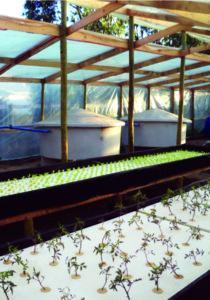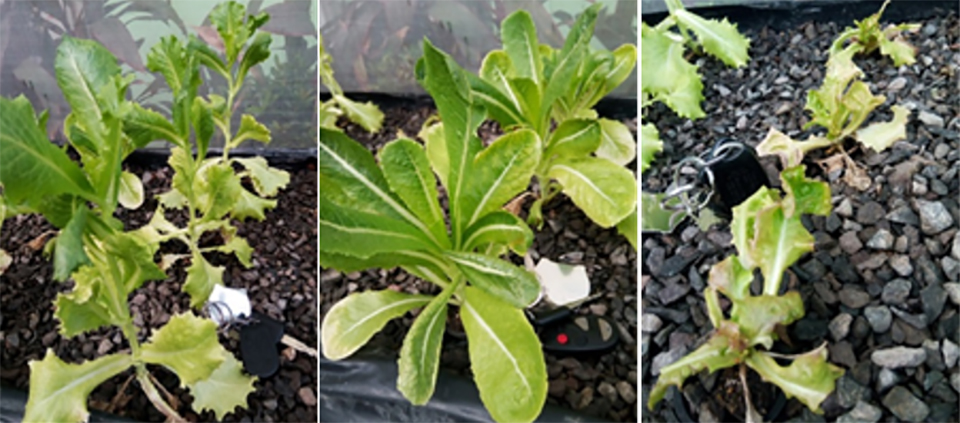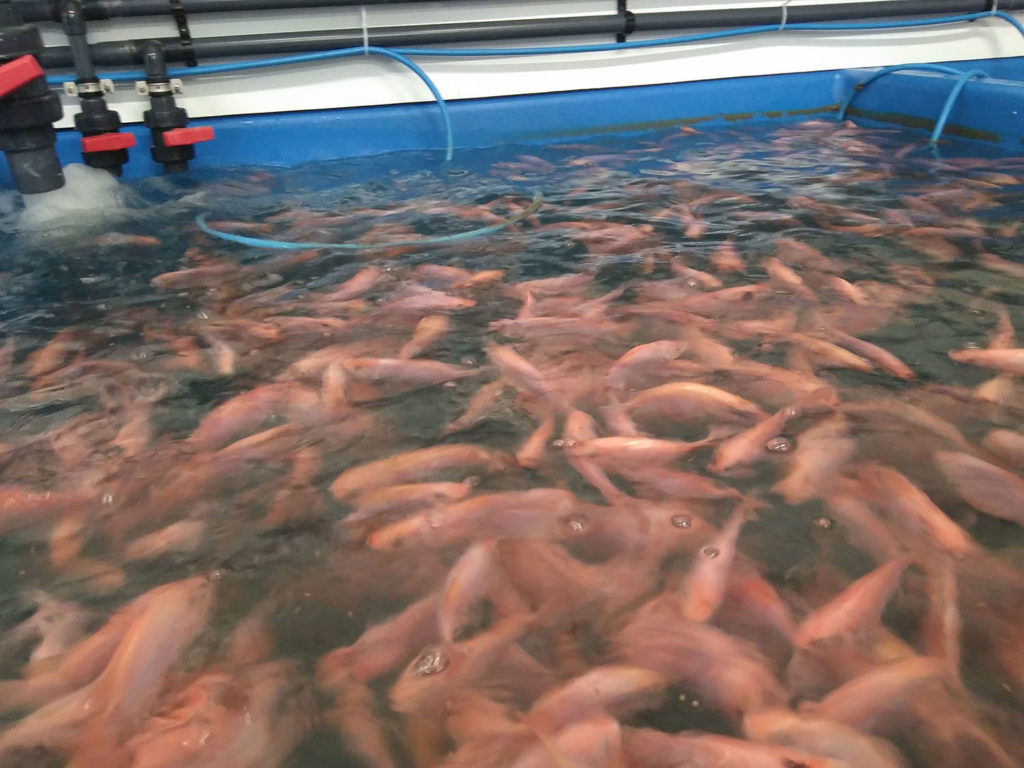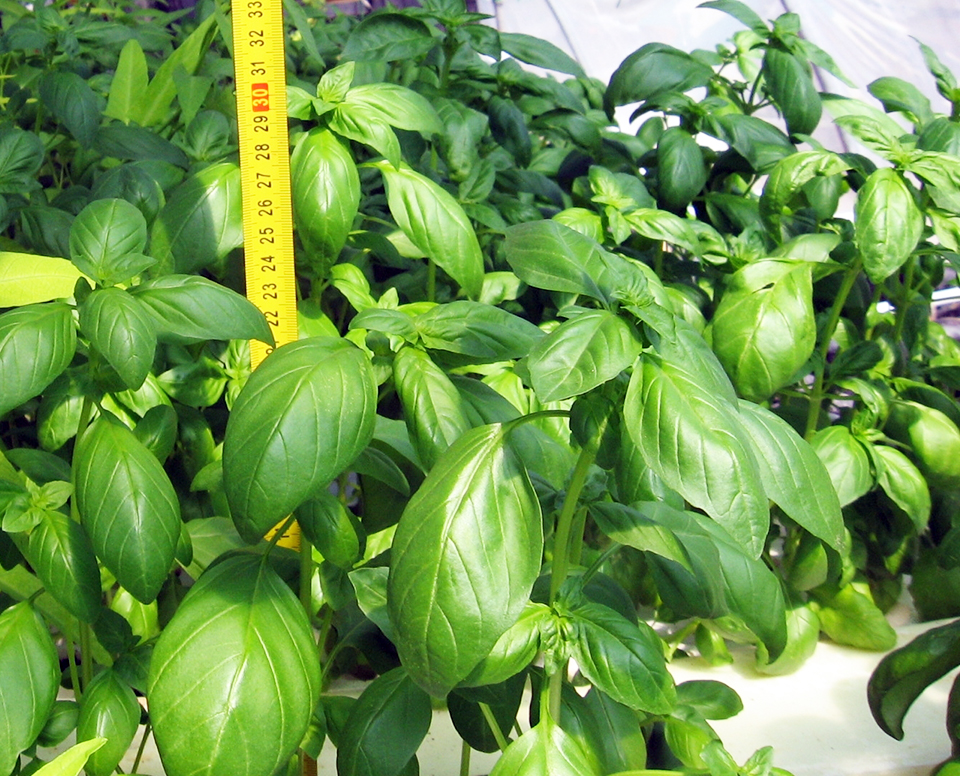Plants help remove and integrate nitrogen and phosphorus

In Chile, aquaculture policy is focused on diversifying and decentralizing an industry that heavily depends of salmon culture in southern Chile. Other policy goals are to bring economic development to new areas, establish an entrepreneurial culture and preserve water resources.
Food production in arid, semi-arid and coastal dry zones with limited freshwater resources in Chile may become practical through further development of technologies such as the combination of recirculating aquaculture systems and hydroponics. Aquaponics systems using sustainable production methods can provide economic benefits as well as additional food.
In a study funded by United Nations Development Program Chile and the European Union Fighting Against Desertification Plan, the authors evaluated the technical and economic feasibility of integrated aquaponics culture in a modular design system.
Species selection
The authors first focused on the selection of species and varieties of fish and vegetables to integrate into an aquaponic framework. For this selection, biological, technical, legal and economic feasibility determination criteria were applied.
The main criteria for fish species selection addressed optimal physiological ranges in terms of physical and chemical water quality parameters, the availability of broodstock and fingerlings, and access to formulated diets.
For vegetable species, selection examined hydroponic crop yields and related utility costs. Neutral photoperiod varieties for temperate zones were considered because the hydroponic component of the integrated system was outdoors without artificial photoperiod management.
Rainbow trout (Oncorhynchus mykiss), tomatoes (Lycopersicum esculentum) and lettuce (Lactuca sativa) were chosen for the study.
Production system
The proposed recirculating aquaponic system was designed on a mass balance approach considering fish effluent mineral load as the quantitative guideline for crop growth. Based on a projected minimum annual production volume, the modular system was to minimize fish health issues and associated financial risks. The hydroponic subsystem was established based on annual production and the number of desired year lots.
The mass balance process began with a compilation, analysis and synthesis of biological, chemical and physical parameters; stocking densities; photoperiod and water quality in target areas. Quantification of the parameters was made through a bibliographic study and educated assumptions. The analysis considered total ammonia nitrogen (TAN), total solids, oxygen, carbon dioxide and alkalinity.
Economic modeling
Net present value and internal rate of return were used to evaluate the economics of an aquaponic module and its scaling to commercial size with four modules. Economic values analyzed selling prices, feed-conversion rates and feed costs. Economic feasibility was examined on a five-year analysis horizon with a discount rate of 16 percent, which represented a high-risk project.
The system
The resulting intensive modular aquaculture/hydroponic system had water recirculation technology with annual production capacities of 5 metric tons (MT) of trout, 5 MT of tomatoes and 9 MT of lettuce.
Surface area was 600 square meters. The total volume of the system was 112 cubic meters – 52.5 cubic meters for the aquaculture subsystem and 59.5 cubic meters for the hydroponic subsystem. The flow required for maintenance of water quality in terms of TAN balance was calculated as 2,372 L/minute.
The hydroponic subsystem contained differential inlet flows to support mineral supplementation, especially for fruiting vegetables. The raft hydroponic technique and nutrition film technique were used for the lettuce and tomatoes, respectively.
Theoretical energy production efficiency of the aquaponic system design was 1.3 kW/kg of fish. Production performance in terms of water use was 70.42 kg fish/L/minute intake water.
The net value indicated that scaling the aquaponic module into a commercial operation with four modules would be profitable with a value of $59.17. The rates of return for a single module would be 22 percent and 37 percent for a four-module setup. Both modular and commercial-scale production would be highly sensitive to variations in the selling prices of products.
The authors are currently operating an experimental aquaponic prototype system specially designed for coastal dry zones in La Vega de la Boca, Navidad, Region VI, Chile. The main target of this project is finalizing a workable commercial module for arid, semi-arid and coastal dry zones of Chile.
Perspectives
Integration of aquaculture and hydroponic production in a recirculation framework has a high productive potential and various comparative advantages. Principally, such integration improves water use efficiency, improves recirculating water treatment because plants participate in nitrogen and phosphorus removal and integration, and brings mutual economic benefits.
Intensive and sustainable production of fish and vegetables through a commercial aquaponic module system could eventually become a new economic activity in Chile for entrepreneurs and microenterprises. This would diversify Chilean aquaculture production and encourage entrepreneurship in Chilean zones with limited freshwater resources and marginal soils.
(Editor’s Note: This article was originally published in the March/April 2012 print edition of the Global Aquaculture Advocate.)
Authors
-
Mario Palma Gutiérrez
Universidad Católica del Norte
Departamento de Acuicultura
Larrondo 1281
Coquimbo, Chilé[109,111,99,46,108,105,97,109,103,64,122,101,114,114,101,105,116,117,103,46,97,109,108,97,112,46,111,105,114,97,109]
-
Germán Merino Araneda
Centro de Estudios Avanzados en Zonas Áridas
Unidad Regional de Desarrollo Científico y Tecnológico
La Serena, Chilé
Tagged With
Related Posts

Intelligence
An engineer’s design for a classroom aquaculture-aquaponics system
An aquaponics teaching system was designed, built and operated by students at the University of Arizona, integrating its operation and management into the educational curriculum. This engineering design will require minimum maintenance and will last years.

Innovation & Investment
Experimental aquaponics system in Costa Rica
This study evaluated the performance and production of channel catfish and freshwater prawns and three varieties of lettuce – American, Romaine and Rose – in a research aquaponics system.

Innovation & Investment
Innovative aquaponics system frugal with fluids
As global demand for food rises, the focus on water resources will intensify. In Berlin, a four-year research project is demonstrating the feasibility of aquaponics, which can drastically cut water inputs.

Responsibility
Saline aquaponics: Potential player in food, energy production
The integration of marine and brackish water aquaculture with plants can help lead to alternative food production on coastlines, in arid lands and in urban/periurban areas. Some 50 salt-tolerant plants could be cultivated for grains or biodiesel applications.


